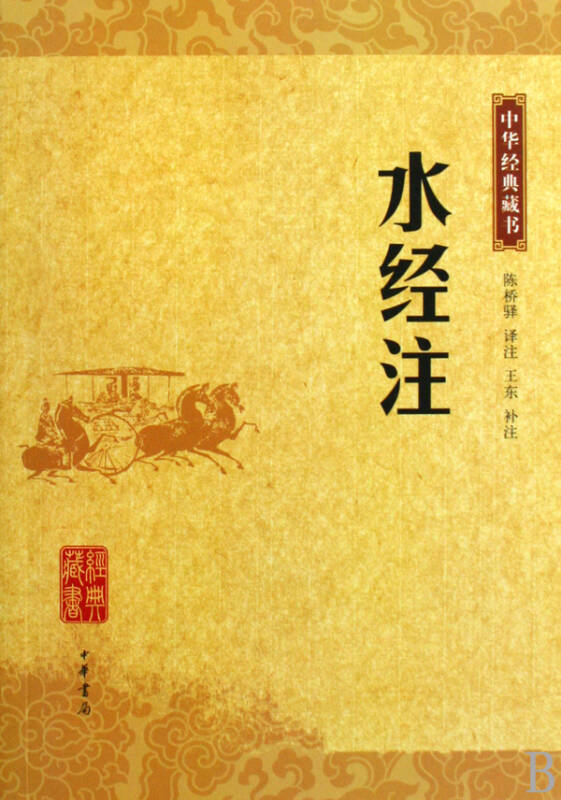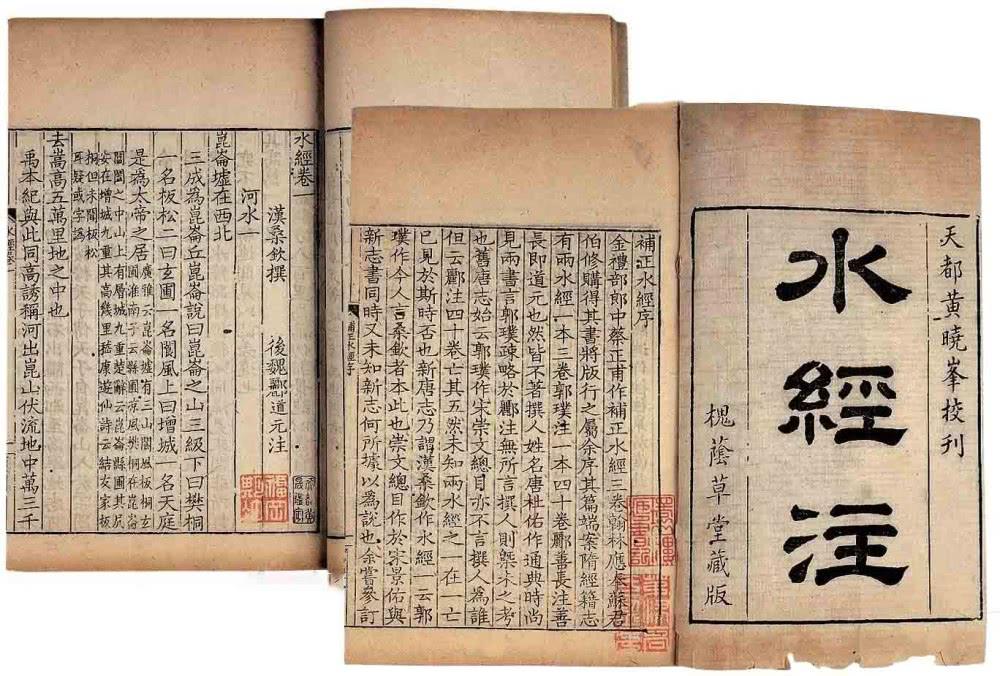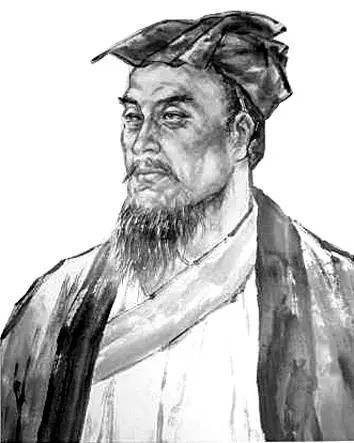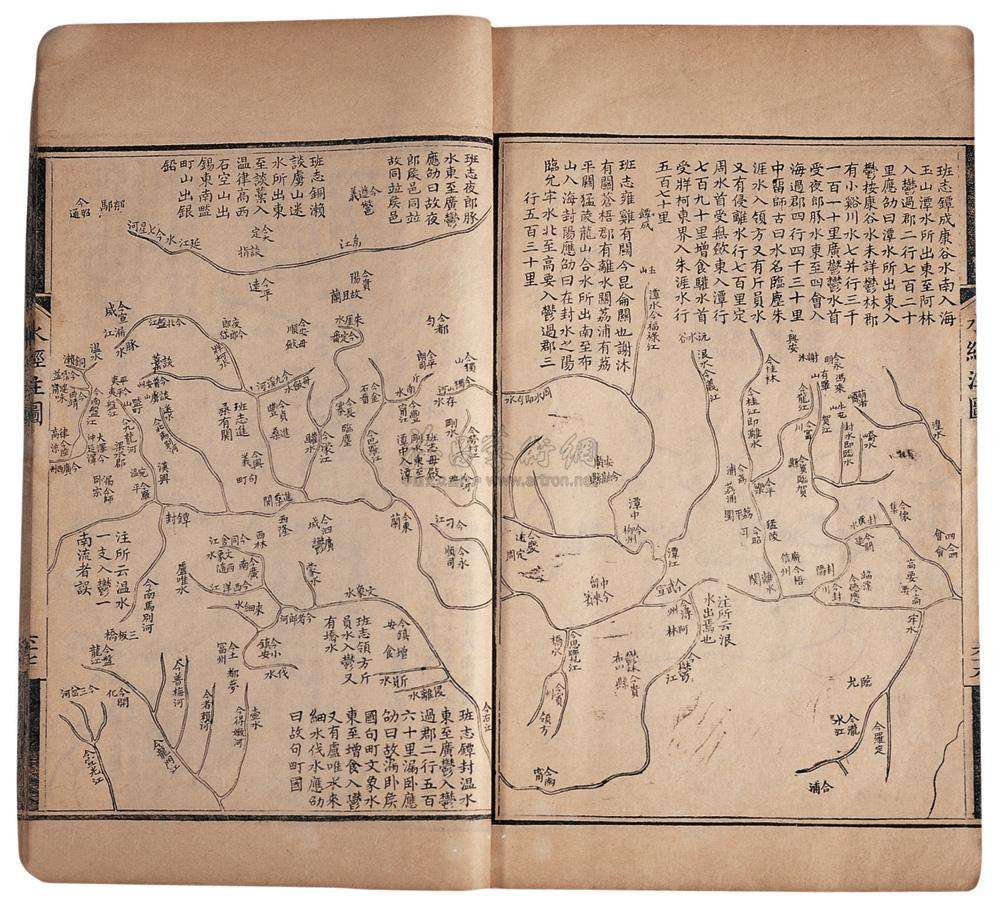Not only a masterpiece of geographical science, but also a treasure of literature and art.
Overview
Chinese Name: 水经注
English Name: Shuijing Zhu, Shui Jing Zhu, Commentary on the Water Classic, Commentaries on the Water Classic
Author: Li Daoyuan 郦道元
Originally Published: Northern Wei Dynasty (386-534 AD)北魏时期
Genre: Geography

Brief Introduction of Shui Jing Zhu
Shui Jing Zhu水经注 is a famous geographical work in ancient China, with a total of 40 volumes. It was written by Li Daoyuan郦道元, a geographer in the Northern Wei Dynasty. Shui Jing Zhu is named after the commentary on the Shui Jing(水经,Water Classic), so it also translates to”Commentary on the Water Classic”.
Shui Jing Zhu records in detail more than 1000 large and small rivers and related historical sites, people’s stories, myths and legends. It is the most comprehensive and systematic comprehensive geographical work in ancient China. The book also records many inscriptions, ink and fishing songs, and ballads, with gorgeous writing and beautiful language, which has high literary value.
Because many of the documents cited in the book are lost, the Commentary on the Water Classic has preserved many materials, which has a lot of reference value for the study of the history and geography of ancient China.

The content of Shui Jing Zhu mainly includes the following three aspects:
1, Physical geography
There are 1252 large and small rivers recorded, which are widely searched and recorded in detail from the origin of the river to the sea, including the main stream, tributaries, valley width, riverbed depth, seasonal changes of water volume and water level, sediment concentration, ice age, and the ambush, waterfalls, rapids, beaches and lakes along the river. There are more than 500 lakes and swamps, nearly 300 groundwater such as springs and wells, more than 30 ambush and more than 60 waterfalls.
2, Cultural geography
There are 2800 county-level cities and other cities, and 180 ancient capitals. In addition, settlements smaller than cities include 10 categories, including towns, townships, pavilions, Li, Ju, villages, ruins, garrisons, docks and castles, with a total of about 1000.
These cities, including some foreign cities, have detailed records, such as boronai City, balenfoy City, wangshe new city, zhanpoguo City, etc.
Transportation geography includes water transportation and land transportation, including about 100 bridges and nearly 100 ferries. In terms of economic geography, there are a large number of data on farmland and water conservancy, as well as a large number of data on land reclamation and farming systems.
In terms of military geography, the full note records no less than 300 large and small battles since ancient times, and many battles vividly illustrate the importance of using terrain.
3, Subject materials
In addition to the rich geographical content, there are many subject materials. For example, there are about 20000 place names recorded in the book, of which more than 2400 are explained. There are more than 30 Chinese and foreign ancient pagodas, more than 120 palaces, more than 260 mausoleums, 26 temples and many gardens.
It can be seen that the book has a certain reference value for history, archaeology, toponymy, water conservancy history, ethnology, religion, art and so on. The above contents are not only amazing in quantity, but more importantly, the author uses literary and artistic techniques to describe vividly. Therefore, it is also a famous classic of Han literature and occupies a certain position in the history of literature.
Author of Shui Jing Zhu
Li Daoyuan郦道元 (466-527) was born in Zhuozhou, Fanyang (now Zhuozhou City, Hebei Province). Officials and geographers in the Northern Wei Dynasty.

When Li Daoyuan was a teenager, he traveled around with his father and was able to observe the mountains and scenery everywhere, which also inspired his love for great rivers and mountains.
After his father died, Li Daoyuan inherited his father’s official position and worked everywhere.

As an official in Shanxi, Henan and Hebei, he often took advantage of his work and spare time to conduct on-the-spot geographical investigation and investigation. Wherever he went, he tried his best to collect relevant local geographical works and maps, and according to the information provided by the atlas, he investigated the distribution of river trunk roads and tributaries, as well as the geographical features of the areas through which the river flows.
He may trek through the countryside, visit historic sites and trace the source of the river; Or visit the villagers, collect folk songs, proverbs, dialects and legends, and then record their own experiences in detail. Over time, he mastered many original materials about the geographical conditions of various places.
From 512 to 515, Li Daoyuan served as an official in Dong Jing Zhou东荆州. Due to his harsh politics, he was sued by the local people to the emperor and removed from his official post. At this time, Li Daoyuan began to prepare for the writing of Shui Jing Zhu.
In 527, he was killed by the rebels at the age of 59.
Excerpts From Shui Jing Zhu
自三峡七百里中 ,两岸连山 ,略无阙处。重岩叠嶂,隐天蔽日。自非亭午夜分 ,不见曦月。至于夏水襄陵 ,沿溯阻绝。或王命急宣 ,有时朝发白帝 ,暮到江陵 ,其间千二百里 ,虽乘奔御风 ,不以疾也。春冬之时 ,则素湍绿潭,回清倒影。绝巘多生怪柏 ,悬泉瀑布 ,飞漱其间。清荣峻茂 ,良多趣味。每至晴初霜旦 ,林寒涧肃 ,常有高猿长啸 ,属引凄异 ,空谷传响 ,哀转久绝。故渔者歌曰:“巴东三峡巫峡长,猿鸣三声泪沾裳。 ”
from《水经注·江水》
Evaluation of Shui Jing Zhu
Shui Jing Zhu is well written! You can’t write such good words without going deep into the field. Li Daoyuan’s field work and positive methods and achievements marked a new stage of ancient Chinese geography.
Mao Zedong毛泽东
The forerunner of world geography.
Ferdinand Paul Wilhelm Richthofen